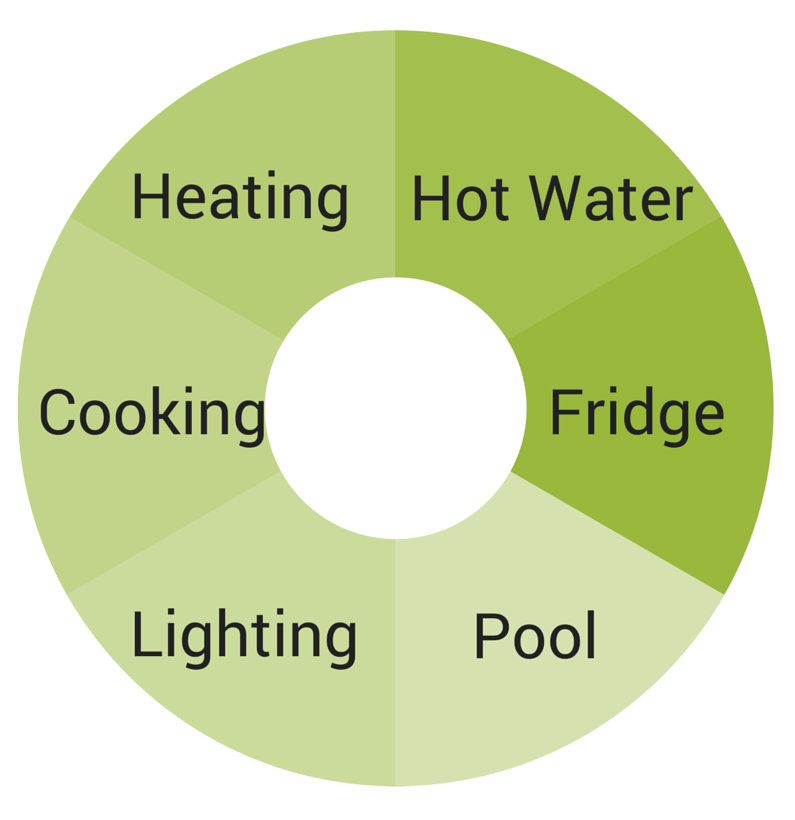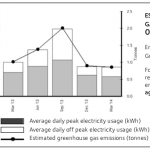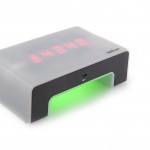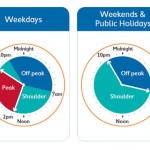Analysis
Reducing your electricity usage starts with understanding where you’re using your electricity.
Start by making a list of the consumption from each device in your home using an electricity usage monitoring device. Keep in mind that some devices will consume a relatively constant amount of electricity over time (eg Toaster, Television, Laptop charger) whilst others will be more variable (eg Fridge, Washing machine, Rainwater pump). For those which are constant a spot check will be sufficient, for those which are variable leave the monitoring device contected for a period of typical usage over 24 hours.
For devices that plug into a wall socket a low cost power usage meter is adequate. For those that don’t such as lights, ovens, hot water services a household electricity monitor such as a Wattson will provide you the information you need. In many cases a process of elimination will be required, turn all devices off until your usage stablises, observe the usage level, turn on a single light, observe you new usage level to determine the consumption of the individual light.
In addition to or instead of the above steps you will find that many of your appliances will be supplied with an energy rating label. This label will give you an annual consumption figure in kWh based on certain assumed levels of usage.
Lastly, be conscious that some appliances will use varying amounts of energy at different times of the year. A fridge for example has to work harder to maintain the same internal temperature when the ambient air temperature in your home is higher say in summer than it is in winter. A solar hot water system may require no electric boosting over summer but could be entirely dependent on it during winter.
Having performed the above measurements you can prepare a schedule such as the one below.
| Appliance | kWh/year | kWh/day | kW/h |
| Chest fridge | 91-109 | 0.25 – 0.3 | |
| New upright fridge/freezer | 409 | 1.12 | |
| Old upright fridge/freezer | 500 | 1.36 | |
| Pool pump (1.5kW, single speed, average 3 hours/day) | 1,314 | 3.6 | 1.2 |
| Pool pump (1.5kW, variable speed, eco mode, average 5 hours/day) | 548 | 1.5 | 0.3 |
| Waste water treatment aerator | 255 | 0.7 | 0.065 |
| Rainwater pump | 110 | 0.3 | |
| Garden watering irrigation pump (@ 4 months/year – summer) | 308 | 2.57 | .75 |
| Washing machine | 40 | 0.33 | |
| Dish washer | 110 | 0.3 | |
| Hot water service | 1,825 | 5 | |
| Oven/stove (1-8kW, say 1kW @ 1 hour/day) | 365 | 1 | 1 |
| Lights – kitchen (72W x 2 @ 4 hours/day) | 210 | 0.576 | 0.144 |
| Lights – lounge room (9 x 9W @ 3 hours/day) | 87 | 0.243 | 0.081 |
| Lights – bedroom (9W x 2 @ 1 hour/day) | 7 | 0.018 | 0.018 |
| Total | 4,374 | 11.9 | 0.5 |
Reduction
Once you know your where your usage is you can pick your targets for reduction. Reduction can occur in three ways a) changing your usage patterns, b) changing the way each device/appliance operates or c) changing the device to a more energy efficient one.
A real time electricity usage monitor is a powerful tool in generating awareness of your usage which will help you change your usage patterns. The feedback provided can alert you to lights left on in other rooms of the house that you’d forgotten about or even help you hunt down all the appliances using standby power before you go away on holidays.
Some appliances can be configured in more energy efficient ways than the default mode. For example – washing on cold water instead of hot, installing a switch/timer on your hot water service so it can be easily turned off when it’s not needed, setting the temperature in your refrigerator to be just cool enough to keep food fresh.
For some appliances, replacement may be the only option to significantly reduce your energy consumption in a given area. Before deciding to buy new energy efficient appliances keep in mind the embodied emissions associated with the appliance you’re replacing. Will the reduced electricity usage more than offset the energy required to manufacture the new device within a reasonable period of time? What will happen to the old device? Can it be re-used or recycled?







